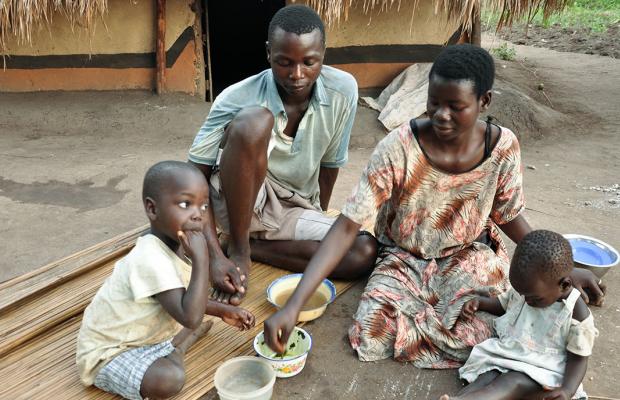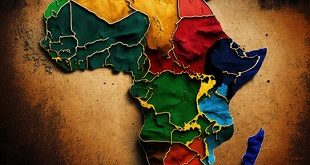
Rich get richer, poor poorer
While delivering the budget to parliament, for example, Minister Kasaija announced that in the FY2018/19, the economy is estimated to have grown by 6.1% to US$29.5 billion.
He noted that employment was growing at a rate of 9.8% in seven years from 2010, and the share of industry had risen from 11.3% in 1986 to 21% in 2019 and average incomes of Ugandans have increased to US$825 (An average of about Shs25,000 per person per month).
But what if the minister had focused on how Uganda has performed on inclusive growth and shared prosperity?
Just last year, a major World Bank report had listed Uganda among countries where its policy drives for inclusive growth and shared prosperity were failing.
According to the World Bank, shared prosperity means working to increase the incomes and welfare of the 40% least well-off in any economy. According to the World Bank, the concept of inequality is distinct from poverty and fairness. This means that improved economic growth figures, rising per capita income, or increased industrialisation could happen without a country achieving shared prosperity.
In the report titled `Piecing together the poverty puzzle’, the World Bank documented how prosperity was shared in each of the 140 countries where it serves. Its conclusion was that there was progress in sharing the prosperity across the globe but some countries were falling short. Uganda was listed among these.
It divided the countries in three categories; Panel A had countries where the income of the poorest 40% is growing faster than the average. This had countries like China, Malaysia, Brazil, Burkina Faso, and Egypt.
Panel B had countries where income of the bottom 40% is growing more slowly than the average. It included Ethiopia, Namibia, Mozambique, Pakistan, Sri Lanka, Sweden, and Norway.
And Panel C, where Uganda is, had countries where the incomes of the poorest 40% are declining faster than the average. Other countries in this cohort were Greece, West Bank and Gaza, Zambia, South Africa, Germany, Canada.
Finance Minister Kasaija had the figures to make the same World Bank case. He announced, for example, that “income inequality has widened between rural and urban areas as wealth has not been created faster in rural communities in comparison to the urban areas”.
Unlike Kasaija, however, the World Bank also employs another concept of “multidimensional poverty measures” to assess shared prosperity that looks beyond measures of monetary poverty such as GDP per capita. It looks at aspects like security of citizens from crime and natural disasters, access to quality healthcare, education, water, sanitation, electricity, and more.
Based on these, the World Bank noted that Uganda’s poverty rate rose from 35.9 percent in 2012 to 41.6 percent in 2016. These are people who live on less than US$1.90 a day and disproportionately live in rural areas, making them vulnerable to disruptions caused by the climate.
Real consumption for Uganda’s bottom 40 shrank by 2.2 percent a year, the World Bank said. It described the setbacks in poverty reduction and shared prosperity as significant and blamed droughts and pests that affected harvests starting in 2016.
The World Bank advocates constantly measuring both poverty and shared prosperity. A look at the budget shows that despite noting the problem, the government is looking in the wrong direction for solutions if shared prosperity is the destination.
What if Uganda stopped looking at the Gini coefficient; which is the most common index for measuring inequality? What if Uganda started looking at another more relevant index to the question of shared prosperity; the 20:20 ratio? This one measures how much richer the top 20% of populations are to the bottom 20% of a given population.
According to experts, the 20:20 ratio can show more clearly how income inequality affects the population as it prevents the big middle part of the bell curve (60% of the population) from confusing the gap between the richest and the poorest.
For example, Uganda’s Gini coefficient in 2017 was better than Kenya (0.48) yet Kenya is a far richer country. Its FY 2019/20 budget is US$30 billion compared to Uganda’s US$10.7 billion. (Tanzania is US$14.3 billon, Rwanda US$3.16 billion, and Burundi is US$725 million).
Advocates of the20:20 ratio say it avoids confusion in understanding inequality. The Gini index which runs on a range between 0 and 1 (where 0 indicates perfect equality and 1 indicates maximum inequality) and in 2017 Uganda was somewhere in the middle at 0.45, according to a report titled ‘Urbanisation and industrialisation for Africa’s transformation’.
The report pointed out that the government had failed to introduce programmes to raise the incomes of the poorest 40% while the rich were getting richer.
In this aspect, according to the report, Uganda performed worse than all other East African countries. At the time, Tanzania’s Gini coefficient was 0.36, and Burundi 0.33 and Rwanda (0.51).
But advocates of the20:20 ratio say it measures human development and social stability better. This is the measure used for the United Nations Development Programme Human Development Indicators. It shows, for example, that Japan and Sweden have a low equality gap, where the richest 20% only earn 4 times the poorest 20%, whereas in the UK the ratio is 7 times and in the U.S. 8 times.
How shared prosperity is got
Shared prosperity is among the known strong pillars of sustainable economic growth. Most economists agree that ensuring shared prosperity starts with education and skilling of the population to participate productively in the economy. The population has to be equipped with the right knowledge, skills, and attitudes for the world of work. Vocational training, lifelong learning opportunities, working age population growth, and labour productivity are the required interventions for human capital investment; especially in the fast shifting digital world.
These interventions benefit hugely from industry-related infrastructure development, free market ideologies, promotion of technological advancement, and social security safeguards.
In contrast, social welfare programs favoured by Museveni may boost the welfare of low income household in the short run but are not sustainable in the long run. There has been Entandikwa (Seed Money), Boonabagagawale (Properity for All), and now Operation Wealth Creation. The people Museveni gives free money through these programmes might buy assets such as motorbikes and bicycles, metal and wood working machines, domestic animals such as cows, and household items such TVs and radios. The most obvious is the Social Assistance Grants for Empowerment (SAGE) programme. People over 80 years old get Shs22, 000 a month. That can buy a kilo of sugar, a bar of soap, a kilo of meat, and a loaf of bread. Most of these people become poor again as soon as the money runs out. This is mainly because cash-handouts weaken incentives to work and invest while redistributive policies such as the minimum wage are counterproductive as they hit small businesses hardest.
What if the government rearranged its priorities to give human capital development the attention it requires? The government would immediately notice that the current 90 technical and vocational schools in the country with total enrolment of 129,000 students are inadequate.
Increasing infrastructure access and reliability, maintaining peace and security and good governance, and industrialisation and improving health and nutrition might deliver economic growth but they cannot cause shared prosperity.
 The Independent Uganda: You get the Truth we Pay the Price
The Independent Uganda: You get the Truth we Pay the Price



